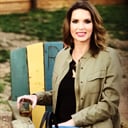As of 2017, which of the following has been recognized as the most flammable chemical known?
Chlorine trifluoride sets fire to materials that cannot otherwise be burned. It sets fire to asbestos, concrete, glass, sand, and Teflon. It can even re-ignite a pile of ash. When it comes in contact with water, it explodes. It corrodes gold and platinum. Candle wax is one of the few known substances that does not burn when chlorine trifluoride touches it.
It burns at more than 2,400 degrees Celsius (4352 degrees Fahrenheit). It burns on contact, without an ignition source, such as a spark. It is a better oxidizer than oxygen, and it needs no oxygen to burn things. Chlorine trifluoride has industrial and military uses, but only about 30 tons of it have ever been produced, as it is extraordinarily dangerous to transport, handle, and store.
A chlorine trifluoride fire is incredibly difficult to extinguish, since water poured on it explodes and makes matters worse. Anything else put on a chlorine trifluoride fire just gives it more fuel.
A chlorine trifluoride fire can release corrosive gasses that rust nearly everything. Flooding a chlorine trifluoride fire with nitrogen, helium, or noble gasses might work, but the most common way to deal with one of these fires is to clear the area and let it burn out.
More Info:
www.thoughtco.com




